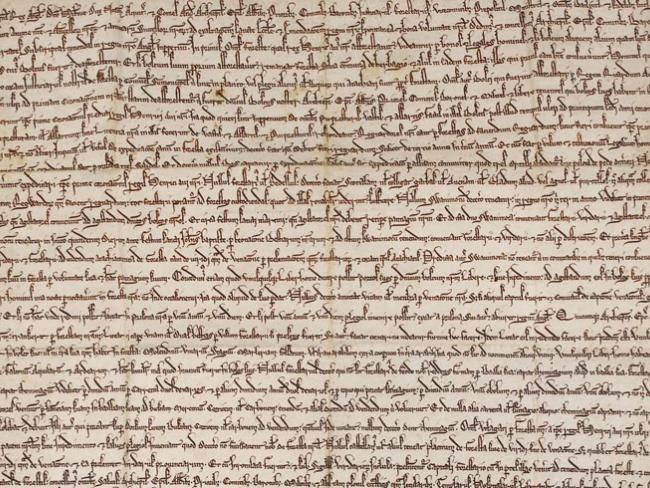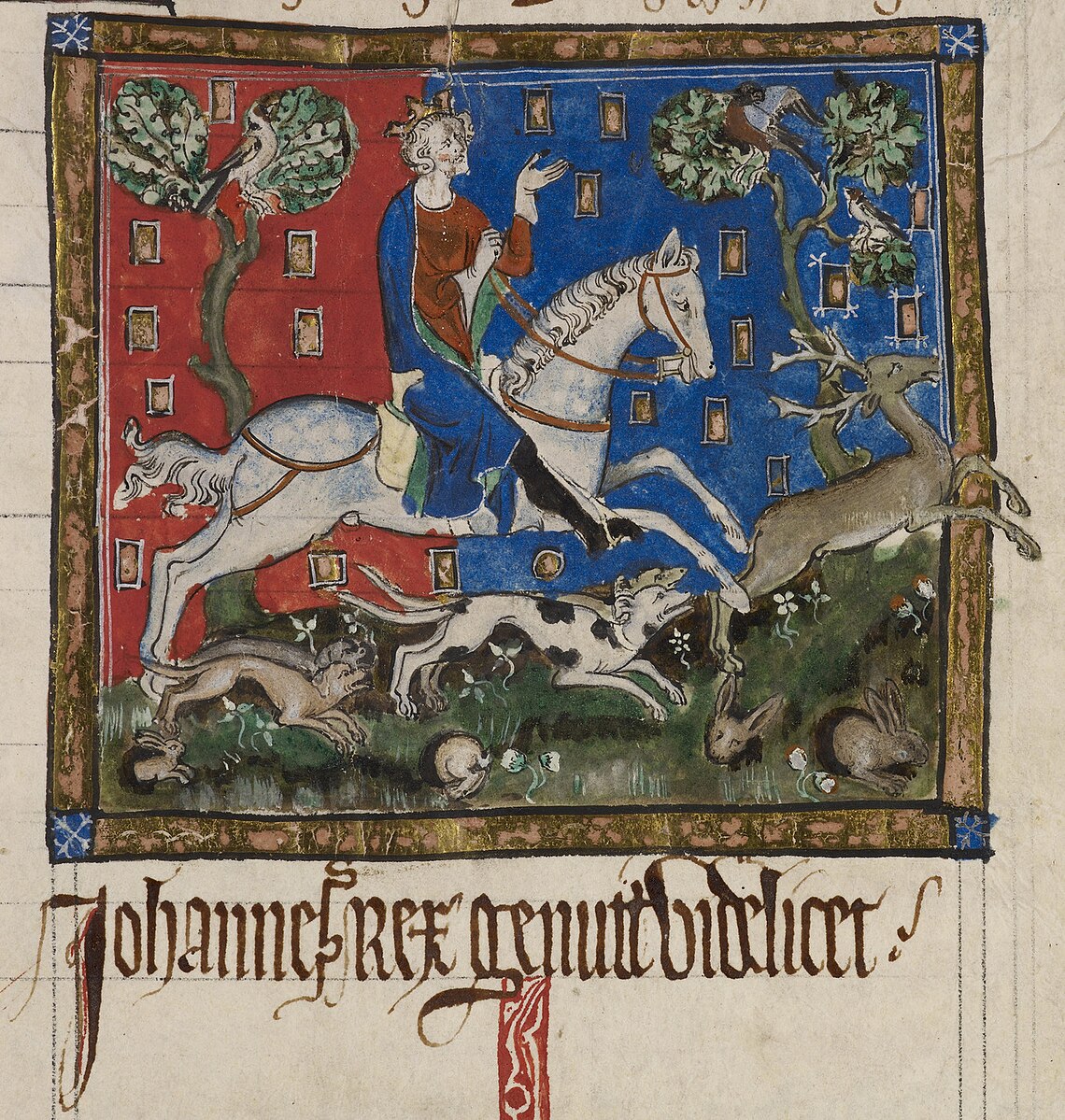25 October 2023

British Library copy of the charter – one of three – made with additions in 1225.
A little-known event in medieval times is still of interest today – it tells us how people can exercise their power…
In 1217 the Charter of the Forest re-established for “free men” rights of access to the royal forests created by the Norman invaders 150 years earlier. Over that time William the Conqueror and his heirs had continually eroded the rights of common people.
The charter was part of a peace settlement following a period of civil war. It was originally sealed by the 10-year old King Henry III (reigned 1216-72), during the regency of William Marshal, 1st Earl of Pembroke.
In many ways the Charter of the Forest complemented the better known Magna Carta, which King John had signed in 1215, the year before his death. Many of the charter’s provisions remained in force for centuries afterwards.
‘Many of the charter’s provisions remained in force for centuries afterwards…’
Henry cancelled the charter when he came of age in 1227. Along with Magna Carta, it was the subject of power battles for the next 70 years until Edward I confirmed both in law. Typically Henry conceded the charter’s terms in return for raising taxes.
To the Normans, “forest” meant an enclosed area where royalty, or the occasional aristocrat, had exclusive rights to animals of the chase and the greenery (“vert”) on which they fed.
Forests also included large areas of commons such as heathland, grassland and wetlands. These areas could be used for food production and for grazing, as well as for fuel and other resources.
The Norman takeover changed things. Forest life in Anglo-Saxon England was different in two ways. First, Anglo-Saxon kings – though great huntsmen – never set aside areas declared to be “outside the law of the land”.
And, secondly, commoners – typically peasants or villagers – did have some rights to use forests and common land, although these rights were not uniform and varied depending on the location, time period and social status of individuals. The contrast with the later operation of Norman forest law was marked. Anglo-Saxon ways were less rigid and less exclusive.
Redress
The charter redressed some applications of the Anglo-Norman Forest Law that had been extended and abused by successive rulers. People resented the cruel punishments that forest courts imposed.
William the Conqueror and his son William Rufus (ruled 1087-1100) both loved hunting. They began to reserve some of England’s vast forests for their own private use. This brought with it not only expansive private hunting reserves, but also an opportunity for great profit by holding a monopoly on the sale of firewood. And they gave themselves the ability to punish those infringing their laws.

Later kings – the Plantagenets, Henry II (1154-1189), and his sons Richard I (1189-1199) and John (1199-1216) – continued the practice of enclosing royal hunting reserves. Lands were ever more restricted as King Richard and King John designated increasing areas as royal forest off limits to commoners. At its widest extent, the royal forest covered about one-third of southern England.
Depriving commoners in this way became an increasing hardship as they tried to farm, forage and otherwise use the land they lived on – for charcoal burning, pannage (pasture for pigs), estover (collecting firewood), agistment (grazing), or turbary (cutting of turf for fuel).
These grievances were among the issues raised at the time of Magna Carta in 1215. Significantly they were of less concern to the barons and so failed to be incorporated in the great charter itself. Two years later, however, these forest rights received their own charter, which was reissued alongside Magna Carta in 1225.
Not only did Charter of the Forest reduce the size of the Royal Forests to that of Henry II’s time, but some areas were eventually reclaimed to become farmland. The population of England was increasing and towns were growing. People needed to turn waste land into productive farming.
Magna Carta dealt mainly with the rights of barons. In contrast, the Forest Charter was more helpful to the common man. It restored some real rights and privileges, especially for those who lived in or near a Royal Forest.
'The Forest Charter restored real rights and privileges…’
The charter offered protections against the abuses of an encroaching royalty and aristocracy. It provided a degree of economic protection for free men who needed to use the forest to forage for food or graze their animals. It authorised their time-honoured right to make a living from the bounty of the great wild commons.
It was regarded for many years as a development of great significance in England's constitutional history. Over 400 years later, lawyers still referred to Charter of the Forest and Magna Carta as examples of England's liberties.
Certainly the charter was a real curb on the arrogant tendency of wealthy elites. Throughout history they assume that the only possible option for common land is conversion to their private property. Later generations experienced this through common land enclosures (in England from the 17th century) and tenant clearances (in the Scottish Highlands in the 18th and 19th centuries).
Pasture
The first clause of the Charter protected common pasture in the forest for all those “accustomed to it”. And clause 9 added, “Henceforth every freeman, in his wood or on his land that he has in the forest, may with impunity make a mill, fish-preserve, pond, marl-pit, ditch, or arable in cultivated land outside coverts, provided that no injury is thereby given to any neighbour”.
Clause 10 repealed the death penalty (and mutilation as a lesser punishment) for capturing deer (venison), though transgressors were still subject to fines or imprisonment. Clause 13 declared, “Every freeman shall have, within his own woods, ayries of hawks, sparrow-hawks, falcons, eagles and herons: and shall have also the honey that is found within his woods”.
Special verderers’ courts were set up within the forests to enforce the laws of the charter. Officials were employed to enforce fines and punishments. At times their annoying behaviour led to rural riots, as in Cheshire in the 1350s.
Limits on authority
But the charter also imposed limits on the authority of forest officials. It established a system of “regarders”, who were responsible for checking and regulating the actions of these officials so as to prevent abuses.
Historians disagree about the degree of significance of the charter. Some believe it asserted not only the rights of ordinary people to access from the commons the means for livelihood and shelter, but also that it represented a constitutional victory for ordinary people over the wealthy elite, opening or reopening forests to the use of non-aristocrats.
Others quibble that the concessions in the charter were only granted to “free men”. It excluded the unfree, a large proportion of the population, whilst allowing lords to make the forest profitable; peasants using forests had to pay to let their pigs root or to gather loose wood or cut trees.
Rights of the free
Undeniably, the charter was a vehicle for asserting the right of commoners against the privileged landed class that normally could employ the power of the state for their own interests. But objectively it was not about the rights of the poor but the rights of the free.
The charter did not apply to serfs (agricultural labourers tied by the feudal system to working on the lord’s estate) or villeins (feudal tenants entirely subject to a lord or manor). Probably less than half of the population benefited. But for free men it was a vital change that reopened access to food and pasture that had been eroded for 150 years.
The provisions of the Charter of the Forest were of far greater interest to the common man than those of Magna Carta. So we can say that for its time and place, the charter was undoubtedly a radical assertion of practical freedoms. And arguably it paved the way for changes of wider benefit.
Progress
The introduction of the charter illustrates where progress comes from. As with most acts, its provisions did not emerge out of the blue, nor was it a piece of altruistic benevolence handed down from those on high.
The free commoners had for centuries been exercising, or attempting to exercise, many of the activities allowed in the act. The ultimate force behind the passing of the legislation was this tradition of social practice and the refusal of the free to be denied what they had before.
The act was a belated acknowledgement of this prevailing balance of power. Equally, after the charter was agreed, the free commoners continued to struggle to defend, uphold and ensure proper implementation of the act. That was the necessary impetus that sustained their rights and kept their acknowledged place within the forests and commons alive.
Then as now, it is people who make things happen and then sustain them.
